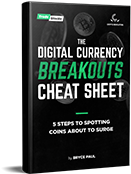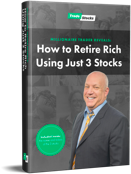
Double Digits, and Then Some
Legendary Wall Street financier Andrew Mellon once famously quipped, “Gentlemen prefer bonds.”
While that may have been true when spats were all the rage in men’s fashion, it would hardly be the case in today’s low interest rate environment.
The 10-year U.S. Treasury’s yield is flirting with 1% after touching a low of 0.59% (not a misprint) in April of this year. Investment-grade corporate bonds aren’t much better. The iSharesCore US Aggregate Bond ETF that tracks the Barclays U.S. Bond Aggregate index reflects a yield of 2.4%. To add insult to injury, the SPDR Bloomberg Barclays High Yield Bond ETF that tracks the Barclays High Yield Index yields 4.33% — a relatively low yield for the assumption of below-investment-grade risk.
So where do yield-hungry bond investors go to get a decent paycheck?
Baby Bonds.
Baby bonds are a niche in the taxable fixed-income market. Where most corporate bonds are issued at $1000 in face value, baby bonds are issued in face amounts much less than $1000. Often, they’re lumped into the same category as preferred stocks. Like preferreds, baby bonds are issued in small denominations, and are listed and trade on an exchange. However, baby bonds and preferreds are two different types of securities.
Preferred stocks are usually viewed as a hybrid security or a cross between a stock and a bond. Preferreds typically have a higher status in a company’s capital structure but may or may not be considered a debt security. Baby bonds are actual debt securities issued by the company, normally with a fixed coupon, a final maturity date and call features. Smaller companies tend to use the baby-bond space because it’s often harder for them to attract the big institutional buyers such as pensions and mutual funds. A smaller face amount and a higher coupon are used to get the attention of individual investors like you and me.
With that in mind, I set out to find some compelling baby bond ideas for your consideration. Here are two that stood out…
Ladenburg Thalmann Financial Services, Inc. 7.25% Senior Notes due 9/30/28 (LTSK)
Tracing its roots back to the mid-19th century as the sixth-oldest member of the New York Stock Exchange, Ladenburg Thalmann owned a niche in the independent broker/dealer space. Earlier this year, the firm was acquired for $1.3 billion by private equity backed indie broker rollup Advisors Group. The private equity behind Advisors Group is an extremely deep pocketed Lightyear Capital.
As Lightyear via Advisors Group were the acquirers, the notes are their obligation. Originally issued at $25 per note, LTSK currently trades at $16.50, which is a 34% discount to par. This bumps the yield up to an attractive 10.95%, which is paid quarterly.
Medley LLC 6.875% Notes due 8/15/26 (MDLX)
These baby bonds were issued at $25 par by Medley Asset Management (MDLY), a subsidiary of Medley Capital Corp. (MCC), an alternative investment management firm that specializes in middle-market lending and loan syndication. The company is officially classified as a business development company (BDC). Medley is regulated as an investment advisor under the 1940 Investment Advisers Act in that the capital it lends is managed as a portfolio that is purchased by investors.
During the Great Recession, when banks literally shut down lending to most businesses, BDCs stepped in to fill that need and have profited from that move, along with their investors in many instances. This trend should continue as BDCs earned the loyalty of closely held, mid-market companies.
Currently, the Medley notes trade at around $7.50. That’s a 70% discount to par, cranking the yield up to 23.74%. However, according to Bloomberg, these notes are scheduled to be called at the end of December at their par price of $25.
A call feature doesn’t necessarily mean that a bond will be called. This was a relatively small issue — around $53 million. It is possible that the company could retire the debt or refinance it, especially with rates as low as they are. If so, investors could see a gain of 233% quickly. Again, that is a BIG “if.”
Action to Take: The income numbers from these ideas are compelling in this historically low rate environment. But, like fireworks, they come with a warning label. These are not rated and are therefore considered a speculative investment. Don’t load the boats. They also trade in thin volume. Use limit orders if buying.
SPONSORSHIP
New IPO targeted by the billionaire behind Google and Amazon
I’d like to ask your permission to share a story with you today. It involves a secret billionaire virtually unknown among regular Americans. Quietly, he was the first backer of Amazon, putting in $8 million at just $0.20 a share in 1996. And now he’s putting hundreds of millions into a new IPO that deserves your attention. He calls it “the largest economic opportunity of the 21st century.”

















